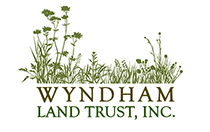What's Going On
Duck Marsh Preserve, Pomfret
Sat, June 21th at 7:00PM - Sunset
Join us to watch the sun set on the longest day of the year. Bring a chair and some refreshments to experience the moment.

Photo by Linda Goodwin.
Check Our FaceBook Page For Up-To-The-Minute Events
The summer solstice occurs at the moment the earth's tilt toward/from the sun is at a maximum. Therefore, on the day of the summer solstice, the sun appears at its highest elevation with a noontime position that changes very little for several days before and after the summer solstice. The summer solstice occurs when the sun is directly over the Tropic of Cancer, which is located at 23.5° latitude North and runs through Mexico, the Bahamas, Egypt, Saudi Arabia, India, and southern China. For every place north of the Tropic of Cancer, the sun is at its highest point in the sky and this is the longest day of the year.
Source: NOAA
